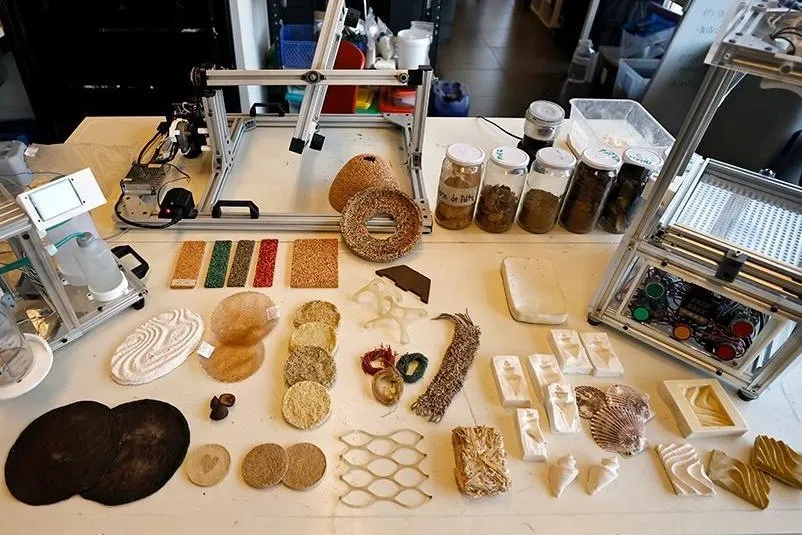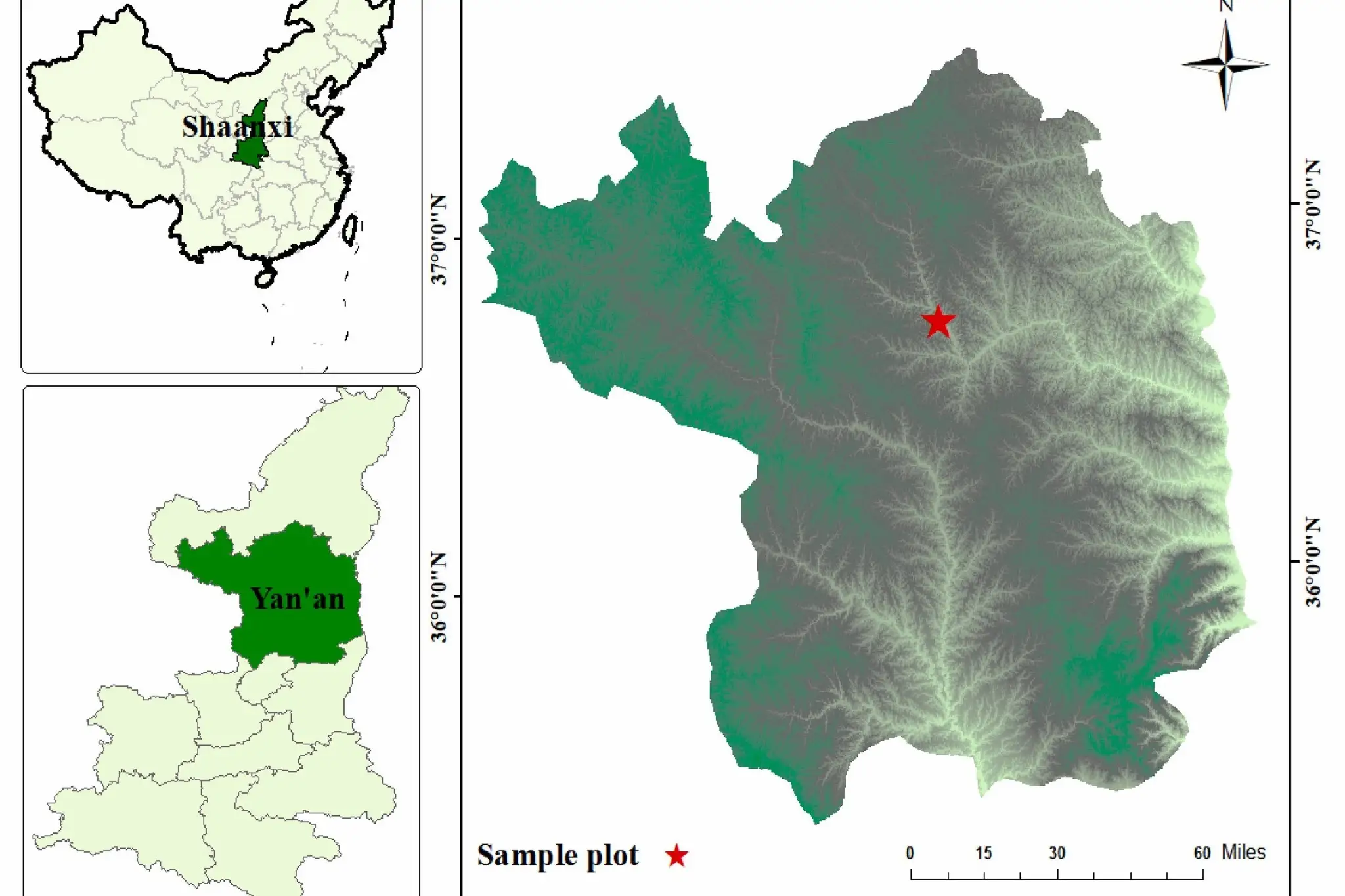In this chapter, we celebrate ten years of the FabLab, a laboratory hosted at the Faculty of Physical and Mathematical Sciences of the University of Chile, which encourages the creation of new products based on biofabrication.
Throughout our lives, we make hundreds of thousands of decisions that deeply affect the planet, often without realizing it. Behind every meal we eat, every pair of jeans we buy, or every plastic bottle we throw away, there lies an ever-growing consumption of energy, water, and transportation.
According to United Nations data, the extraction of natural resources needed to produce food, clothing, housing, and other goods has more than tripled since 1970, with a 45% increase in fossil fuel use. The processing of these materials accounts for half of global greenhouse gas emissions and over 90% of biodiversity loss and water stress.
Our lifestyle has become increasingly unsustainable, and ecosystems can no longer keep up with our demands. In this context, a community at the University of Chile has been promoting projects for ten years aimed at social and environmental well-being through the development and application of emerging fabrication technologies.

The FabLab as an Open Space
“FabLab is a laboratory for creation and innovation located within the Faculty of Physical and Mathematical Sciences at the University of Chile. We are part of a global network with more than 2,000 laboratories around the world. What unites all these spaces is the desire to democratize access to technology. They are open, educational, and experimental places. As part of the Faculty of Engineering, we carry within us the mission of developing science and technology to serve ecosocial well-being. From this principle, all our programs and community activities are born. And, naturally, the most important question we ask ourselves is what it means to create a public laboratory,” says Danisa Peric, industrial designer and executive director of the University of Chile’s FabLab, a structure that promotes the creation of new biofabrication-based products.
“We live in a country that has historically been agricultural, with a strong vocation for farming. Consequently, we have a large amount of organic matter and waste. What would happen if we used this biomass to turn it into materials for our projects? For example, cherry pits, leaves and corn cobs, coffee grounds, which we can transform into new materials thanks to the technologies available at the FabLab. If we need an inner coating for a house, we can use these materials and work them. Moreover, because of their composition, they can later be thrown into the compost, reintegrating into the soil and nourishing it. The idea is to think about the full cycles of the objects we produce and the origin of raw materials. We can collaborate with nature to create our material culture,” Peric emphasizes.
Coreza: Interspecies Design
Designing and implementing new production models that connect the local and the global, the physical and the virtual, through a collaborative logic: this is the laboratory’s mission to address the challenges of the future. In this direction lies “Coreza,” a project conceived by Sofía Aceituno during her internship at the FabLab in 2020, dedicated to creating cat houses made from cherry pits.
“At that time, the FabLab was working on a project called Digital Fabrication Nodes, which aimed to develop machinery for biofabrication. I was studying and experimenting with different kinds of residues, and by chance, I came across the cherry pit. The connection was immediate: it’s an easy-to-handle waste, similar to a small pellet, shaped like a tiny bowl. I was also very interested in its chemical characteristics since I had already studied biofabrication and biobased materials: the pit is a lignocellulosic residue with properties similar to wood. Since then, I haven’t stopped working on it,” says the designer, a graduate of the Faculty of Architecture and Urbanism at the University of Chile.
Sofía mainly works with maraschino cherry pits from the Maule Region, which undergo three stages to become cat houses: preparation of the raw material (sun-dried and then ground to different granulometries), modeling to give it structure, and, if necessary, a post-processing phase to refine the final product.
The result is a cat house with an irregular shape and curved lines. According to Sofía, similar proposals could also be developed using other by-products from the agroindustry. “In Chile, the agroindustry generates a great number of bioresidues characterized by their lignocellulosic composition, found in stems, cobs, and leaves, which promotes the cohesion of the raw material. Although we started with cherry pits, we want to integrate other types of residues together with other biofabricators. That’s the wonderful thing about biofabrication: the collaborative world that is emerging today in research and innovation.”
A Change of Mindset
The same cherry pits can also be used to produce other objects that promote coexistence between animals and humans, a central theme in the “Coreza” project. “It’s a beautiful field, because it’s a design that doesn’t respond only to our needs, but to those of another species. I find it essential that, among the sustainability criteria of design, we start to decenter the human being, placing at the core the needs of the environment,” explains the designer.
For Sofía Aceituno, environmental protection represents one of the most urgent challenges in industrial design. Biomaterials and biofabrication offer strong alternatives to reduce environmental impact, even though they still cannot compete with petroleum-derived materials.
“However, I believe there’s an even greater challenge: integrating emerging materials into our material culture,” she stresses. “It’s not enough to fight the negative effects of polluting materials; we must address human behavior linked to overconsumption. Soil exploitation and the amount of waste we generate stem from an attitude, not from the material itself.”
She adds: “There are no good or bad materials; what matters is how we use them and the attention we give to their end of life. Beyond the production or market challenges a biofabricated material may face, the goal must be a change in behavior: awakening awareness about what we consume, what we take from the Earth, and what we give back to it.”
A Look Toward the Future
We can all live more sustainably. But to do so, we must consider the impact of our daily decisions on the world around us. “Coreza” embodies the spirit of the FabLab, along with other projects such as kombucha scoby leather or bioplastics made from avocado pits.
Looking ahead to the ten years of activity that FabLab celebrates in 2025, Danisa Peric encourages people to continue viewing this laboratory as a meeting point for creation and innovation, open not only to the academic community of the University of Chile but also to the general public: “Our dream is for everyone to have access to what happens here, to meet the people who are part of it, and to feel like members of the creative community. We want to show that there are other ways to conduct research and design—more open and collaborative—and to spread these approaches to the worlds of innovation and entrepreneurship, which today are so crucial.”
Source text and image: Universidad de Chile
Cherry Times – All rights reserved













